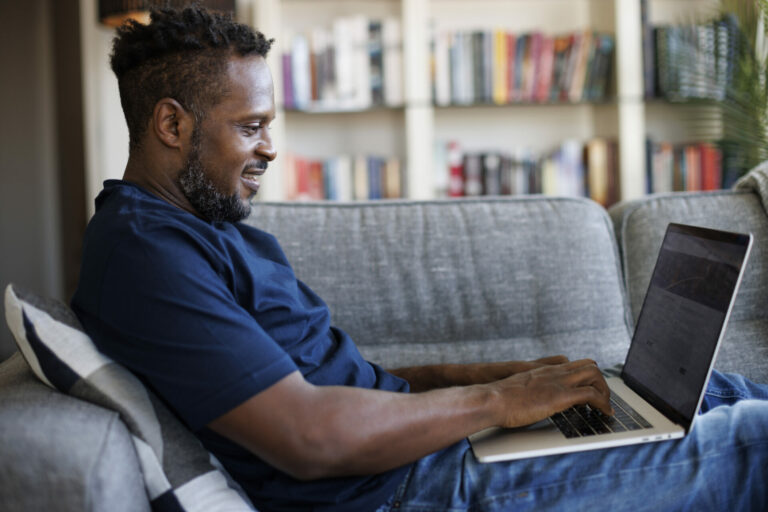The ancient art of Chi Kung can provide you with tools to calm the body and mind and centre yourself, so you’re able to speak and connect with others from a place of confidence, authenticity, and personal authority, says Lizzie Slowe
Some people are born speakers. However very few people can honestly say that they never get nervous before a big meeting or presentation. We all want to present the best side of ourselves, and do our ideas justice, so how can we avoid being sabotaged by our own adrenaline? It isn’t new news that much of our communication is non-verbal – estimates are that between 70% and 93% of what we communicate doesn’t come out of our mouths.
Chi Kung is an ancient Taoist art, that is remarkably relevant today, just as it was more than 2,500 years ago. Literally translated, it means ‘Energy Exercise’.
Energy can be a contentious term, but just think of it as the quality of ‘how we are’. ‘How we are’ leaks into all of our non-verbal communication, whatever we are saying won’t be convincing if we aren’t feeling it. So, if we can affect our energy – we can affect that 70-93% of what we’re communicating.
This means that among other things, Chi Kung can provide us with tools to calm the body-mind and centre ourselves, so that we’re able to speak and connect with others from a place of confidence, authenticity, and personal authority. If we embody strong, centred energy, that’s what others will see.
Chi Kung can be very simple – but not necessarily easy. If you persist over time, you’ll start to have a real felt understanding of what we’re working with (of Chi), and it’s vast impact. To start with, just think of it as the quality of how you feel.
Most people will get a significant benefit from the following two exercises, but persist over a few days / weeks and the benefits will increase hugely.
Finding and strengthening your centre – your Dan Tien
To illustrate the importance of this practise, it might help to understand the following. We are feeling machines that think and not thinking machines that feel. Direct experience is felt first in the body, and then afterwards is made sense of in the brain. Our body has the ability to process 11 million bits of information per second, whereas our brain can only process 40 bits of information per second. So, our brain interprets, pattern matches and glosses over in order to keep up. Getting centred in your belly and aligning your body with what you want to communicate means that everyone else in the room will be picking up and feeling the truth and congruence of what you’re broadcasting as well as saying.
This practise puts you in touch with your own centre, step one of any alignment.
Sit on a seat with your knees hip width apart and your feet right underneath your knees. Keep your feet parallel, as if on train tracks. Imagine your sitting bones moving in towards each other and feel a lift in your pelvic floor. Your lower belly is strong and pulled slightly in which lets you relax as you sit upright. Let the crown of your head feel as if it’s being lifted up towards the sky, lengthening the back of your neck, allow your chin to tuck slightly.
Place your palms, one on top of the other over your belly, just below your belly button.
Take your awareness, and your feeling senses to the place under your palms in the centre of your body. This is your Dan Tien – your centre.
This is where the world first interacts with you, the seat of how you are. Imagine a flame in this place. As you inhale, imagine the flame grows, and flares; as you exhale, imagine the flame shrinks and intensifies. Every in-breath the flame gets bigger; every out-breath the flame gets smaller. Slow it down, so that the breath in goes on for longer, and the breath out goes on for longer, the flame growing more and shrinking more. See if you can feel it as well as imagine it.
After one-to-three minutes (or longer if you can maintain the practice) let your breathing return to normal and let your hands rest in your lap. Notice the residual sensation in your belly.
Once you have this felt sensation of your centre (your Dan Tien), try getting up, moving around, but maintaining your balance and awareness in this part of your body. It’s as if you’re no longer looking out of your head, but out of your belly. The more you practise this the easier it becomes. You can even try interacting with someone – although the speech is coming out of your mouth, it’s as if it originates in your belly.
Your Dan Tien is the centre of your power as well as your body. Speaking and acting from this part of you will have a depth to it, that others will not be able to name or specifically notice, but will carry a more rounded ring to it – an authentic weight.
To practise this a little more here is a more active form to help you to get into your centre, your power house.
Gathering Chi to your power house – your Dan Tien
Stand with your feet parallel and hip width, balance just behind the ball of each foot. Imagine that you’re lifting through your instep, inside of your ankles and knees, up into your pelvic floor. The lowest part of your belly is pulling slightly in and back, your tail hanging down towards the ground and your sitting bones moving towards each other (this way of standing provides your body with absolute stability and so gives confidence). Your spine rises easily up through your body, be aware of your head balanced well on top of your spine, crown of your head floating upwards (the head is very heavy, if it’s jutting forwards, it will cause tension to pull you off your centre).
Place your palm of your right hand over your Dan Tien (just below your belly button) and the flat of the back of your left hand over your lower back – opposite the front hand. Draw your shoulder blades down your back and continue to do this throughout this form.
Keeping your palms facing behind you, little finger skywards, open both arms out to your sides as you breathe in. As you breathe out, bring them back in, but this time the left palm is over your belly, and your right back of your hand is over your lower back. Take a tiny pause between the end of the breath and the new in-breath as you connect to the flame in your belly with both hands, before repeating the breath and movement.
Inhale – both hands move out to the sides staying palms back, little fingers up, exhale – your hands come back into your lower back and your belly (swapping places).
Continue this for at least a minute, then stand still (or sit) with your arms hanging by your sides (or in your lap). Keep your awareness in your belly, with that flame.
When it’s time for the meeting or the presentation, walk into the room from your belly (it sounds odd but is actually entirely possible). If and when there is a pause, a moment, or you need a second to compose yourself, having practised the above, you’ll be able to tune back into your centre with a single breath. This will have the effect of making your decisions, communications, and responses feel clear. You will be able to think faster and present more calmly.
The more you practise these skills, the more effective they become, but even if you run through them a couple of times a day for a few days before you need them, you will be amazed at how effective a little Chi Kung can be. You might even notice that other things, as well as your presentation and meeting skills, start to improve.

Lizzie Slowe is a well-being expert, qualified equine therapist, Chi Kung Master and author of The Living Art of Chi Kung, available now.



